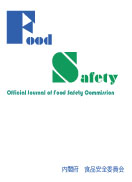Volume 6, Issue 4
Displaying 1-6 of 6 articles from this issue
- |<
- <
- 1
- >
- >|
Original Article
-
Article type: Original Article
2018 Volume 6 Issue 4 Pages 143-150
Published: 2018
Released on J-STAGE: December 21, 2018
Download PDF (1589K) Full view HTML
Short Communication
-
Article type: Short Communication
2018 Volume 6 Issue 4 Pages 151-155
Published: 2018
Released on J-STAGE: December 21, 2018
Advance online publication: November 21, 2018Download PDF (821K) Full view HTML -
Article type: Short Communication
2018 Volume 6 Issue 4 Pages 156-159
Published: 2018
Released on J-STAGE: December 21, 2018
Download PDF (706K) Full view HTML
Risk Assessment Report
-
Article type: Summary
2018 Volume 6 Issue 4 Pages 160-161
Published: 2018
Released on J-STAGE: December 21, 2018
Download PDF (522K) Full view HTML -
Article type: Risk assessment report
2018 Volume 6 Issue 4 Pages 162-163
Published: 2018
Released on J-STAGE: December 21, 2018
Download PDF (541K) Full view HTML
Editorial
-
Article type: Editorial
2018 Volume 6 Issue 4 Pages 164
Published: 2018
Released on J-STAGE: December 21, 2018
Download PDF (467K)
- |<
- <
- 1
- >
- >|
